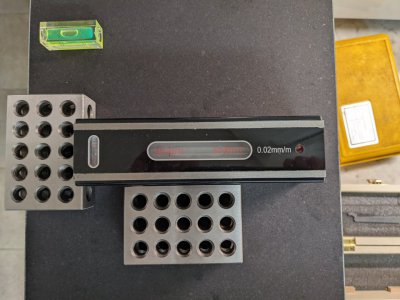If the lathe is going to stay there, why not approach this from a different direction.
I think you mentioned that you have a welder. Weld some angle iron clips on the bottom of the legs and bolt it down to the floor, use the leveling screws on small pads to roughly level the stand. X-brace the stand ends and back with 3/8" round stock (or rebar). When you do this, leave a 3/16" gap at 1 end of each rod so the weld pulls the rods tight as it cools. Once the stand is as solid as the floor, you can add a piece of 1.5 or 2" square tubing under the head stock. Level that tube front to back (to establish the plane of your lathe), weld it to the stand and use longer bolts to hold that end down solid.
On the tailstock end use long fine thread bolts and 3 nuts to make jacking screws. All of your "leveling" and twisting can now be done against a solid base while you're standing up.
I think you mentioned that you have a welder. Weld some angle iron clips on the bottom of the legs and bolt it down to the floor, use the leveling screws on small pads to roughly level the stand. X-brace the stand ends and back with 3/8" round stock (or rebar). When you do this, leave a 3/16" gap at 1 end of each rod so the weld pulls the rods tight as it cools. Once the stand is as solid as the floor, you can add a piece of 1.5 or 2" square tubing under the head stock. Level that tube front to back (to establish the plane of your lathe), weld it to the stand and use longer bolts to hold that end down solid.
On the tailstock end use long fine thread bolts and 3 nuts to make jacking screws. All of your "leveling" and twisting can now be done against a solid base while you're standing up.


